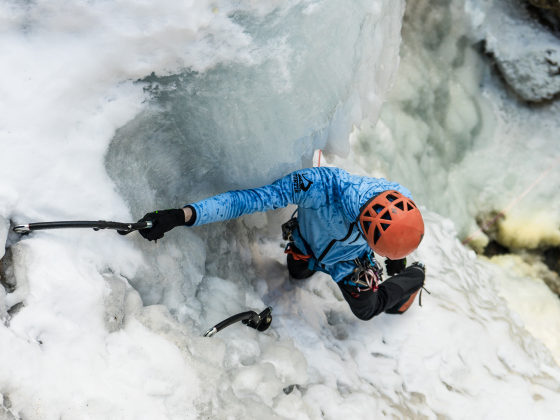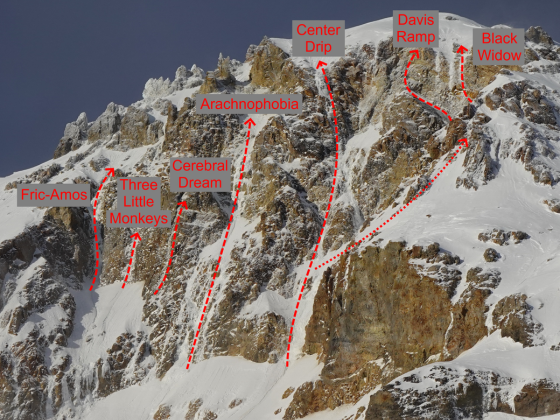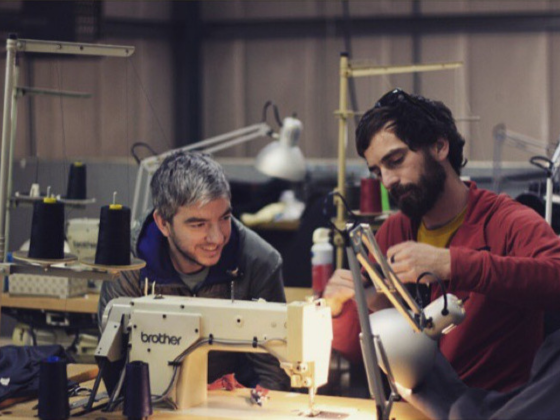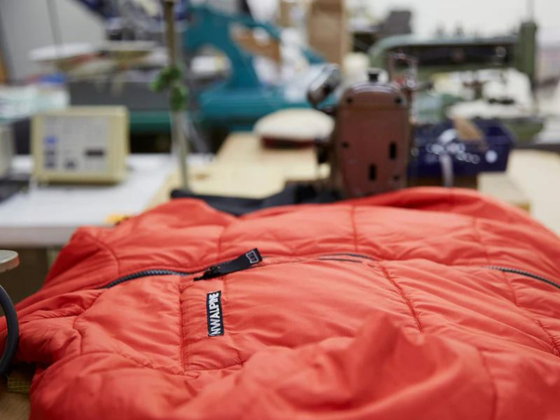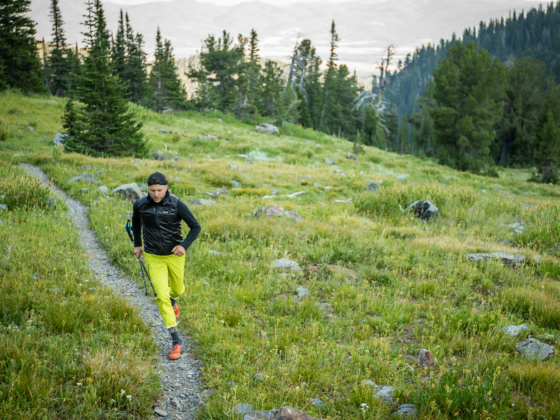It was a busy winter and spring in Alaska this year. Several long high pressure systems provided good conditions and weather for climbing. In March, my friends and I made our fourth trip into Mt. McGinnis, the eastern most peak in the Hayes Range. A 14 mile approach brings you to the east face and easy access to a col on the northeast ridge, our objective. We gained the col, dug in for the night, and continued up in the morning. After a few blocks of simul-climbing along the knife-edge ridge, Andy arrived at the belay and told me that he was feeling pretty worked. I turned and looked at the long section of ridgeline we had remaining to get to the summit, almost a mile. I know we could have made it to the summit, but it was descent back down the knife-edge ridge that I was worried about. It was an easy decision, we went down.
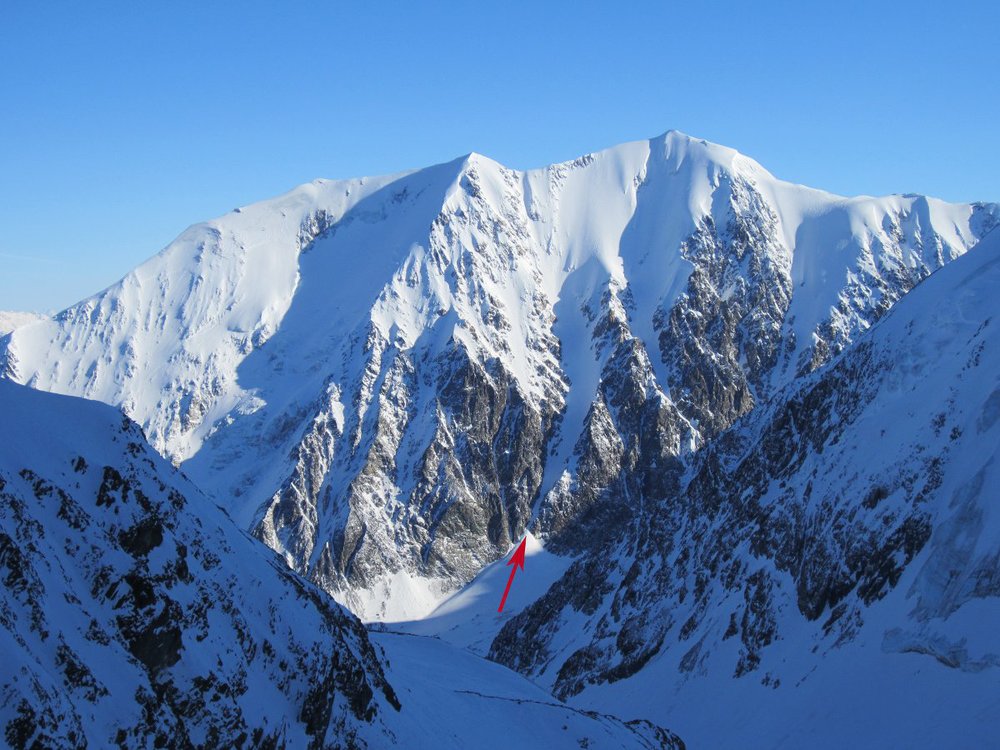
The Northwest Face of Peak 9400 Photo: Jason Stuckey
As we downclimbed under bluebird skies, I struggled with disappointment. During all of my previous trips here the weather had been horrendous. As we descended through the icefall a couloir on the northwest face of Peak 9400 caught my eye. Chad and I decided to give it a go the next day while Andy rested in the tent. We skied over and started up the couloir around 9am. The snow was a bit deep at the bottom of the couloir where it pinched down, but conditions improved above. The angle was around 45 degrees, steepening to 60 degrees on the upper part of the face. Simul-soloing, we topped out 20 yards from the summit. The face had been in the shade the entire morning, and a strong wind had begun to blow about halfway up. But the summit was warm, sunny, and sheltered from the wind. It was glorious. I usually don't like to waste too much time on the summit, but we stayed for almost an hour. The view was incredible. We finally packed up and headed back down the face. An hour and a half of downclimbing brought us to back to our skis. We had dinner and slept, and the next day skied out to the car and headed back to Fairbanks.
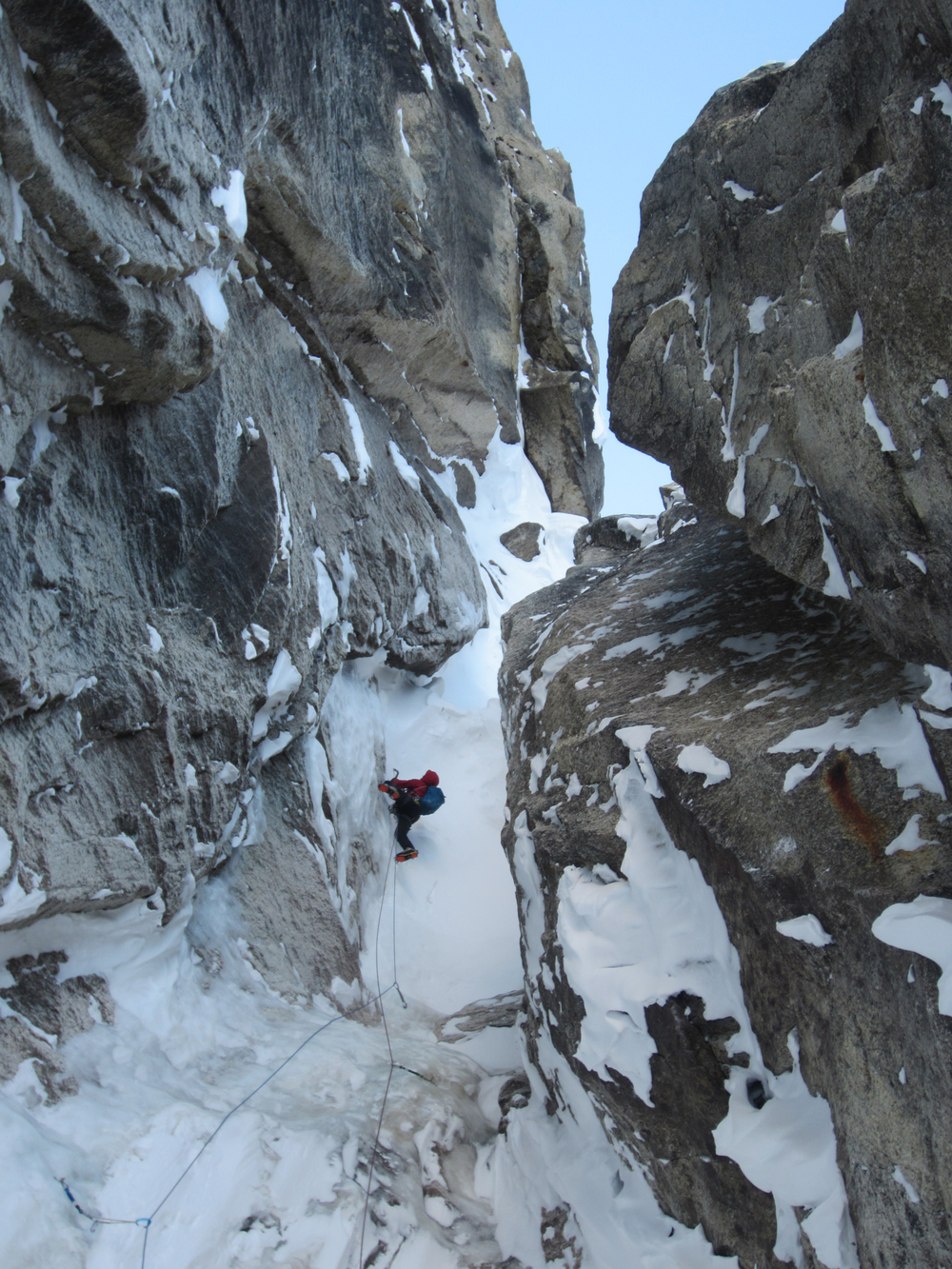
Clint on Pyramid Peak before Bailing Photo: Jason Stuckey
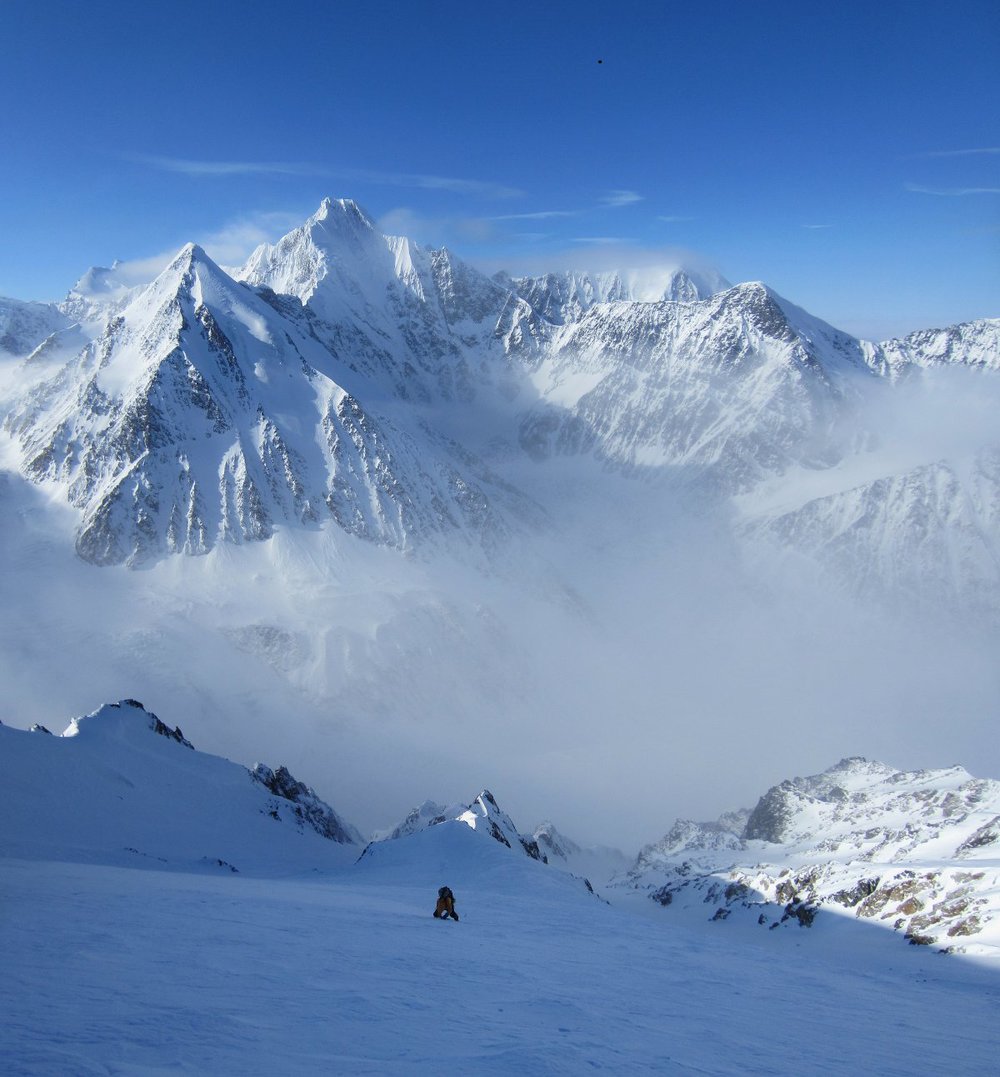
Descending Peak 9400 Photo: Jason Stuckey
A week after the trip I got a message on Facebook from Clint Helander, a climber down in Anchorage. He and his partners had been waiting for almost 2 weeks to fly into the Revelations, the western most mountains in the Alaska Range. His partners had to get back to work and school, but he still wanted to fly in and needed a partner. I had never met Clint, but knew he had already made numerous trips into \the Revelations and had climbed several first ascents. This was an opportunity I didn't want to miss. Somehow I talked my boss into letting me take more time off, and a few days later I was on a flight to Anchorage. Clint picked me up, and shortly after we loaded our gear and were on our way to the Revelations. We landed on the Revelation Glacier, setup camp, and skied down to Pyramid Peak to look at a line Clint had seen the year before. We couldn't see the upper part of the mountain due to clouds, but the lower half looked good. We had a good dinner and went to bed early. At 4am we were up, and after breakfast and coffee we were ascending the lower slopes below Pyramid. From the ground, it looked like there was going to be steep steps of ice with lower angled sections in between. But instead of ice we found overhanging waves of snow. Scary, and not fun. We climbed around them on mixed \terrain, but around every corner we came to another wave of snow. After spending most of the day climbing six pitches we bailed.
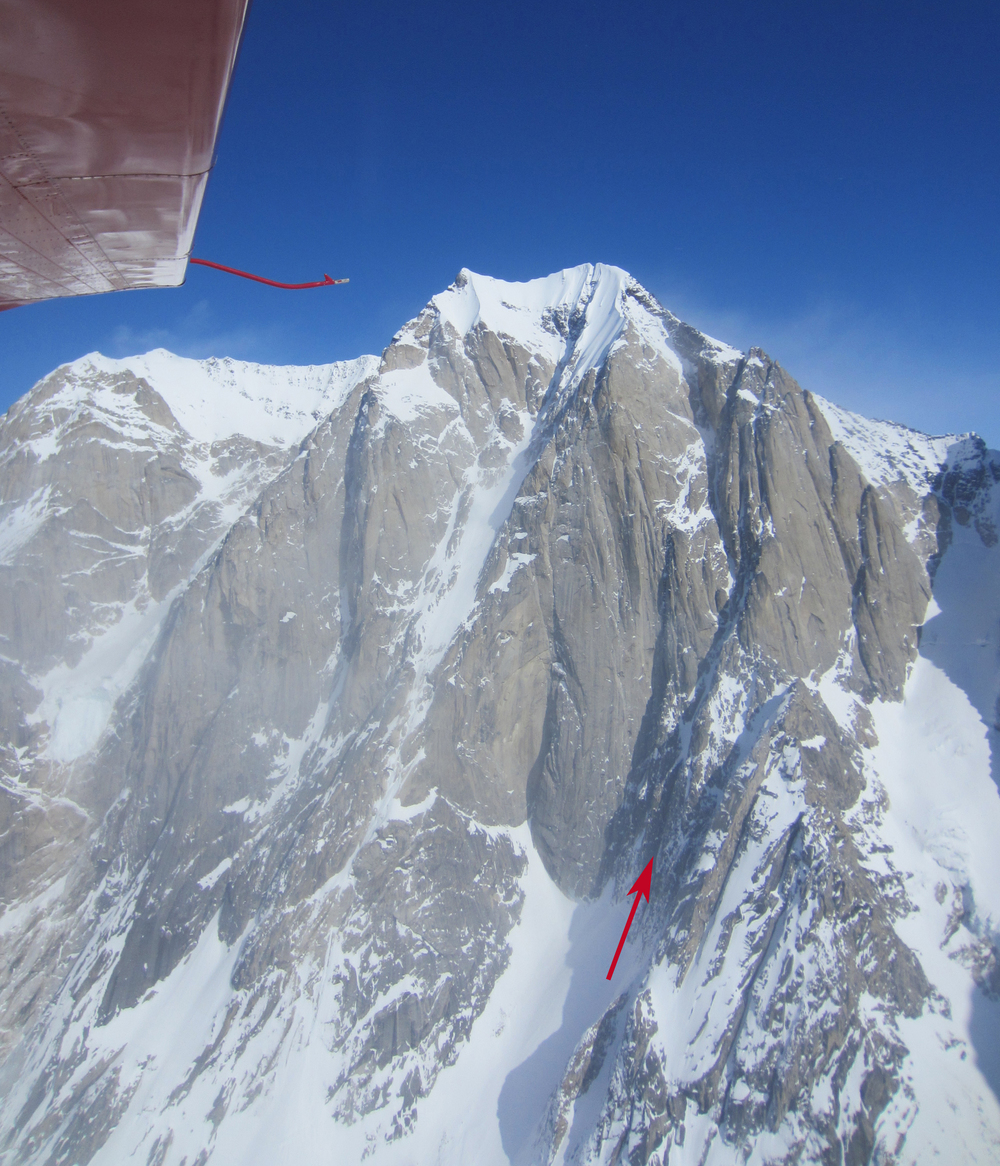
Apocalypse West Face with Route Marked
We spent the next day skiing around and looking at other objectives. Clint wanted to try a line on a peak towards the end of the glacier called The Apocalypse. After a few minutes looking at the west face I was psyched. A steep ice and snow couloir looked like it would take us to the upper snow slopes and the summit ridge. We skied back to camp and packed. Another early start and we were heading up the slopes below the first section of steep ice by mid-morning. The first ice pitch was excellent and led to lower angled ice which we simul-climbed. The ice ended and a long section of snow climbing brought us to another steep ice pitch. After this more snow climbing with short sections of ice brought us to the base of a steep rock wall and the final section of ice before the upper snow slopes. It was getting late so we built an anchor and chopped a ledge in the snow at the base of the wall. After an hour, we had a ledge big enough for our tent. We brewed up, ate, and slept.
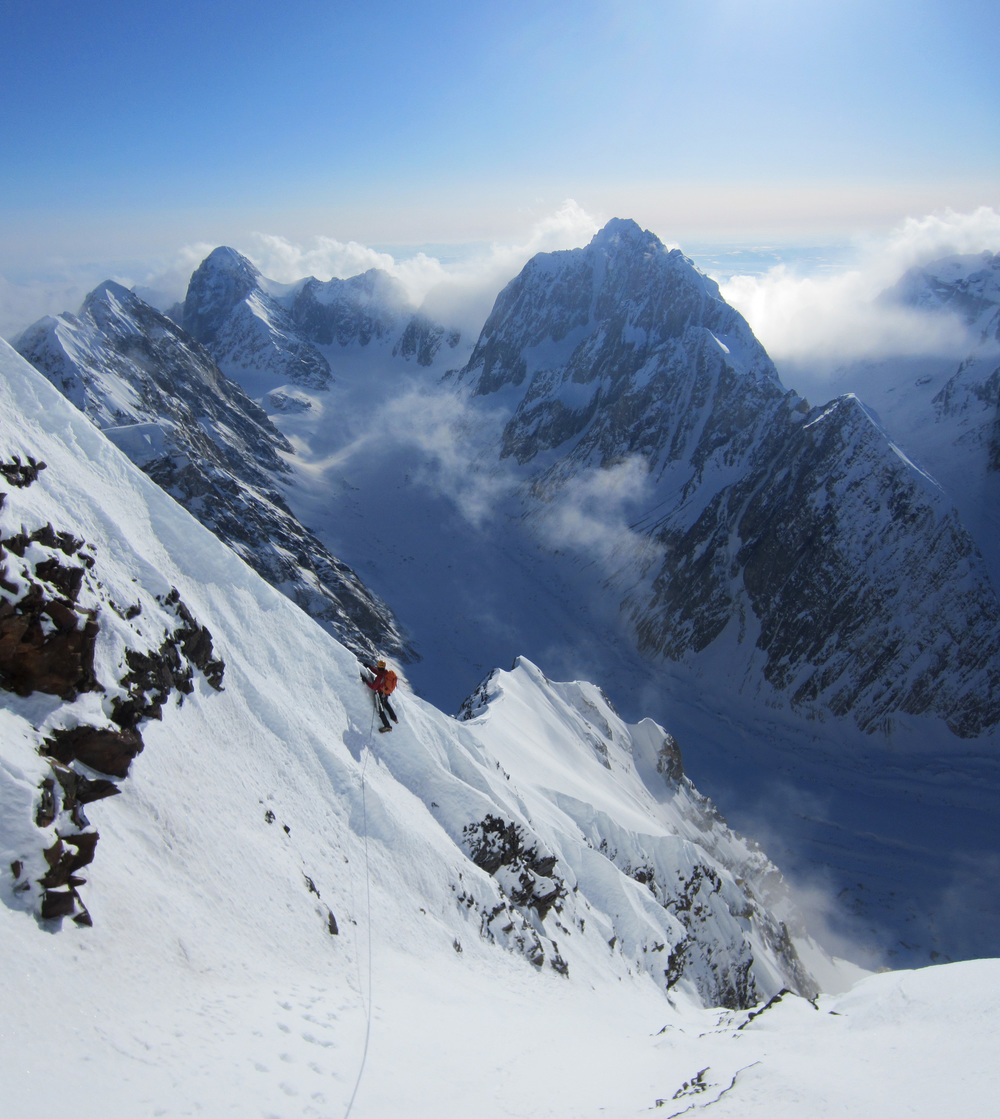
Clint Climbing on Apocalypse Photo: Jason Stuckey
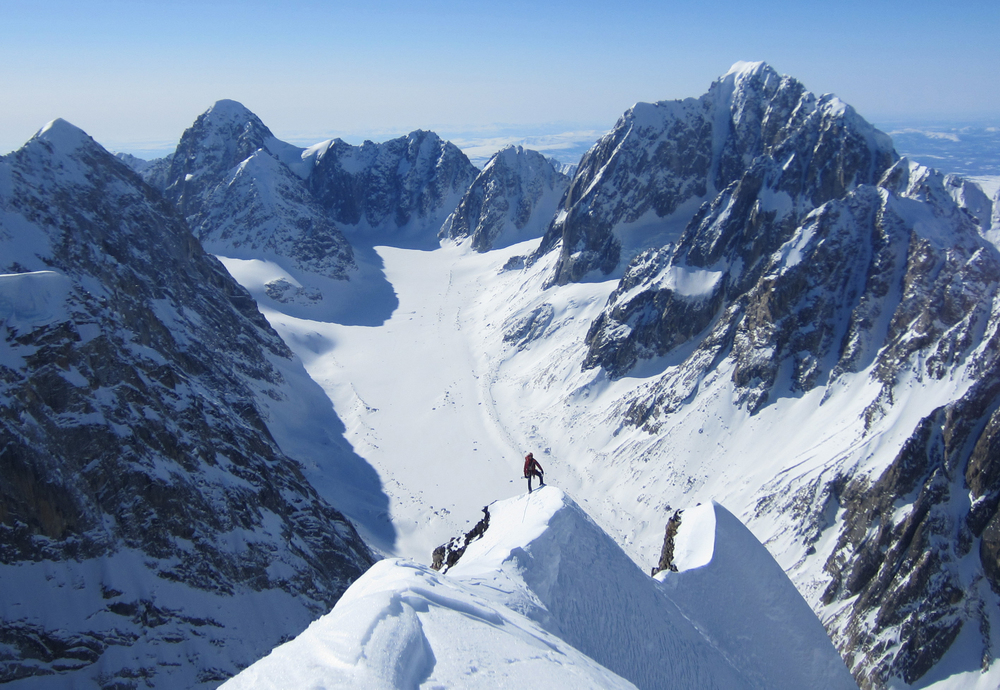
Climbing on Apocalypse Photo: Jason Stuckey
The next morning we left most of our gear and went for the summit. After the last bit of steep ice we reached the upper snow slopes, and simul-climbed up to the summit ridge. As I reached what I thought was the highest point on the ridge, I realized (to my great disappointment) that a point 300 yards across the ridge was actually about 20ft taller than where we stood. We wanted to stand on the true summit, so we headed across the knife-edge ridge. The climbing, although very exposed, went quickly and before long we were on the summit. We took a few minutes to admire the view, snap some photos, and then began our descent. Heading back across the summit ridge and down the upper slopes went smoothly and before long we were rappelling back down to our bivy. Another brew, more food, and more sleep. The next day we downclimbed and rappelled the rest of the route. As we skied back to camp there was a brisk headwind and I realized how lucky we had been with the temperatures while on Apocalypse. Our first night was pleasant, a bit colder the second night, but when we arrived back in basecamp it was -20F. We ate a huge dinner, made several hot water bottles, and went to bed. When we got up the next morning the mercury in the thermometer had dropped below -25F. Clint had wanted to stay longer and try a couple more objectives, but I was feeling pretty satisfied and concerned about the weather deteriorating and having a hard time flying out if we waited. By chance, Paul Roderick with Talkeetna Air Taxi was flying a team of skiers in that afternoon and after a short discussion we decided to fly out with Paul. We made breakfast, broke down our camp, and a few hours later were sitting in Talkeetna eating pizza and drinking beers. It was magnificent.
First ascent of the Northwest Face of Peak 9400 (60deg snow, 3,400')
First ascent of The Apocalypse, A Cold Day in Hell (AI5, 4,400')

